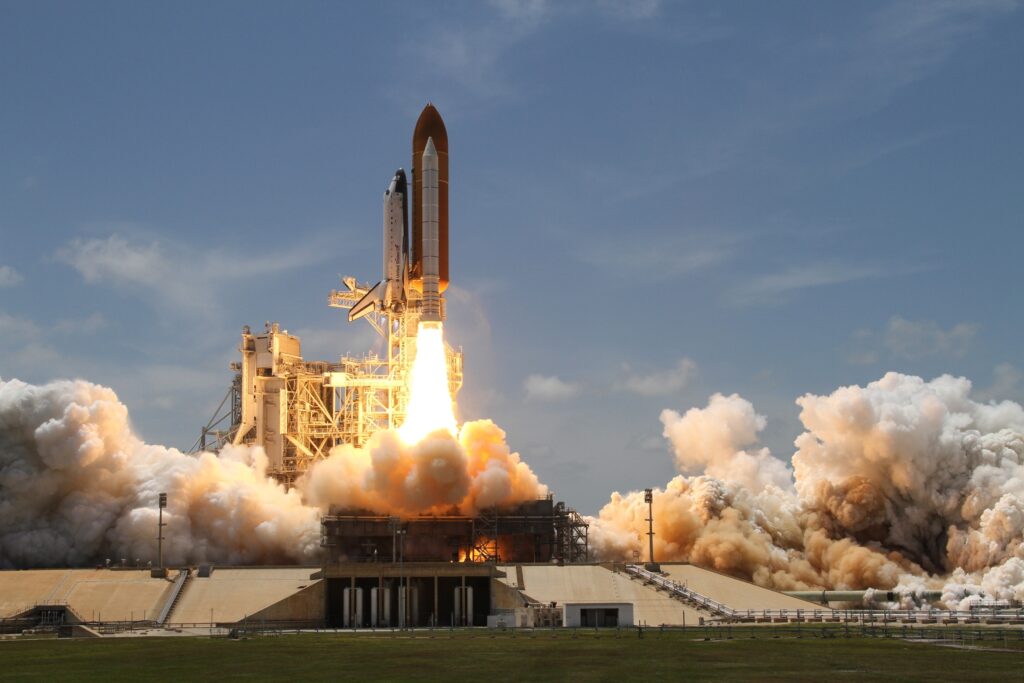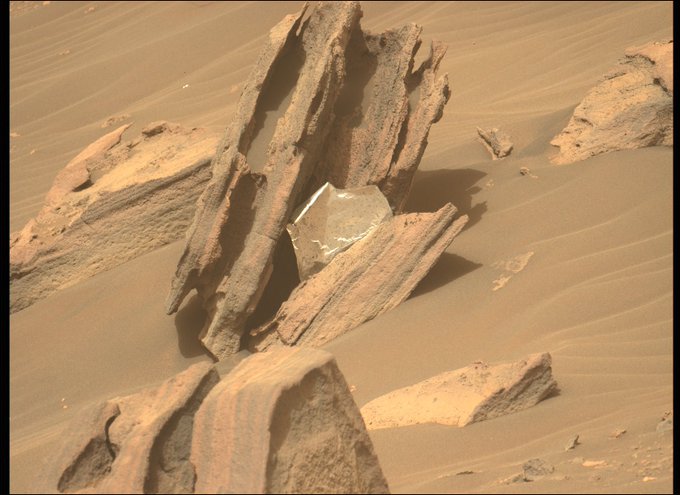
The Impact of Space Exploration on Climate Change
The first piece of human trash was recently found on Mars, marking a monumental moment where our human impact has preceded our actual physical presence on the planet. While I admire the endless possibilities and wonder that comes with space travel and exploration, my environmentalist mindset is always thinking about the environmental impacts before anything else. That is why I wanted to explore the impacts of space travel and how that relates to the climate movement, so read the article for a summary of my findings!
In a nutshell, space exploration is an important topic of discussion for the climate movement because it is foundational to climate science. It provides us with more information about the Earth, our solar system and the role of gases in our atmosphere. Nuclear energy has played an important role powering our missions into space. Inmarsat says in their Space Sustainability Report that space environmentalism is a cultural mindset that should be at the heart of all satellite operations with the aim of using the space domain responsibly and with consideration for other users and for future generations

Space Regulation
Right now, the Federal Aviation Administration (FAA) has the general job of overseeing the commercial space industry. But regulation of space is still miles behind where it should be. Regulation of space is not well developed, and presents many opportunities for conflict as we start to “divide and conquer” space. The Federal Aviation Administration has the general job of overseeing the commercial space industry, but there is a lot of room for growth. Satellites are regulated at the national level and through licensing, guided by the principles of the Outer Space Treaty of 1967.
Recommended regulations for satellite expansion include:
-Creating a level playing field for operators globally.
-Creating a new regulatory framework that allows robust enforcement, including penalties for companies that flout the rules.
-Increase investment in data and analytical tools to ensure a better understanding of the underlying science.
-Detach sustainability from national security concerns; countries should be able to share information about the location of their satellites without revealing their purpose.
Regulation for space tourism will have to be quickly rolled out since the Outer Space Treaty of 1967 is generally broad.
Space Debris
Over the past six decades, about 11,000 satellites have been launched, of which 7,000 remain in space. Hundreds of thousands more are planned to launch by the end of this decade as private companies like Elon Musk’s Starlink and Amazon join China and other nation states in building mega-constellations in Low Earth Orbit (LEO). These new mega-constellations will have tens of thousands of satellites, each with an expected life of only 5-10 years. As of now, these have the potential to create vast amounts of space debris that will clutter their own orbit and endanger anything passing through it.

On top of the debris from satellites, nuts and bolts, paint flecks, and other rocket parts also fly around in space. This debris travels at high speeds, increasing the chances of collisions and explosions. Space objects falling down from orbit will contribute to unpredictable climate effects. These satellites will de-orbit and decay into the Earth’s upper atmosphere, depositing more aluminum particulates than all of the meteorites that have entered the atmosphere.
Impacts of Jet Engines
Virgin Galactic is a space tourism company that wants to fly tourists to the edge of space several times a day. This is concerning because a single Virgin Galactic suborbital space tourism flight, lasting about an hour and a half, can generate as much pollution as a 10-hour trans-Atlantic flight. Solid rocket engines burn metallic compounds and emit aluminum oxide particles together with hydrochloric acid, both of which have a damaging effect on the atmosphere. The American Geophysical Union found that “400 space flights per year over 40 years would generate enough greenhouse gas emissions to cause up to 1°C more warming in the Arctic than is already projected.”
One advancement is the BE-3 engine that powers Blue Origin’s New Shepard suborbital vehicle. It combines liquid hydrogen and liquid oxygen to create thrust and emits mainly water along with some minor combustion products. This is a major improvement from solid rocket engines, and shows the potential for climate-conscious decisions in the space industry. Blue Origin is also creating reusable orbital boosters, which will (hopefully) decrease some of the space junk that would have otherwise been created.
In the long term, injecting pollutants into the stratosphere has been predicted to alter the polar jet stream, change winter storm patterns or affect average rainfall. Research on how space tourism and exploration will impact the stratosphere is extremely critical, especially as we continue practices on Earth that are also impacting our weather systems. In the atmosphere near Earth’s surface, rain and weather washes out polluting particles. The stratosphere does not have rain, so pollutants can remain for 3 to 10 years before passing through.

Climate-Conscious Advancements and Regulation
Research programs will be important to develop so that we can develop a database with basic emission characteristics of modern propulsion systems that will be used in space tourism and exploration. Wider research would be necessary to analyze the emissions and impacts of individuals types of rocket engines and fuels on the stratosphere. Data will most likely be collected through ground test and by analyzing flumes just after aircraft launches. For this research to take place, NOAA and its partners would need to provide funding to conduct tests.
However the smart use of space can enhance life on earth. Satellites are reducing emissions in the aviation industry by optimizing flight paths and helping container ships boost efficiency and profitability. Elsewhere, space technology helps us measure global carbon emissions more accurately, allows farmers to boost yields and feed the world’s growing population more sustainably. Satellites will be essential if we are to connect the roughly three billion people who have yet to use the internet. Whole industries, from mining to retail, simply would not be able to operate without satellite communications. At the multilateral level, countries with the largest footprint in space must come together to agree some basic standards, such as limiting the number of satellites in a given orbital shell.
There is an insufficient provision of technical capabilities, interoperable standards and regulatory tools with respect to Space Situational Awareness (SSA) and Space Traffic Management (STM). Satellite operators of all types from various countries are operating with incomplete
and inaccurate data resulting from an absence of international standards in object characterization, cataloguing and broader modelling assumptions.

Read more on this topic here:
Space Sustainability Report by Inmarsat
Space Tourism to Accelerate Climate Change



